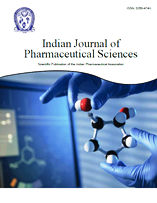Abstract
Enhanced Production and Characterization of Cyanophycin Granule Polypeptide from Nostoc sp.: A Sustainable Bioactive Polymer
Department of Biotechnology, University College of Engineering, BIT Campus, Anna University, Tiruchirappalli, Tamil Nadu 620024, India
Correspondence Address:
Geetha Subramanian, Department of Biotechnology, University College of Engineering, BIT Campus, Anna University, Tiruchirappalli, Tamil Nadu 620024, India, E-mail: sgeemur01@gmail.com
Cyanobacteria, or blue-green algae, produce cyanophycin granule polypeptide, a nitrogen storage polymer composed of aspartic acid and arginine, as a survival mechanism. This study aimed to enhance cyanophycin granule polypeptide production in Nostoc sp. under nitrogen-limited BG-11 medium, achieving a maximum yield of 7.5 % of the cell dry weight (wt/wt). Cyanophycin granule polypeptide characterization by Fourier transform infrared spectroscopy revealed characteristic amide vibrations at 1654 cm-1 and 1542 cm-1, confirming peptide bonding. Reverse-phase highperformance liquid chromatography analysis revealed a sharp, well-defined peak for cyanophycin granule polypeptide at 5.664 min, confirming its presence and characteristic elution profile. Additionally, 1H nuclear magnetic resonance spectroscopy confirmed the presence of arginine and aspartate residues. Antioxidant assays demonstrated significant free radical scavenging activity, with 46 % and 44.5 % inhibition observed in the 2, 2′-azino-bis (3-ethylbenzothiazoline- 6-sulfonic acid and hydrogen peroxide assays, respectively. The 3-(4,5-dimethylthiazol-2-yl)-2,5- diphenyltetrazolium bromide assay on L929 murine fibroblast cells showed a concentrationdependent decrease in cell viability, with cyanophycin granule polypeptide reducing viability to 81 % at 100 μM, indicating mild cytotoxicity at higher concentrations. These findings highlight Nostoc sp. as a sustainable source of bioactive cyanophycin granule polypeptide with strong antioxidant potential and limited cytotoxic effects, supporting its application in biomedical and biopolymer research.
Full-Text | PDF



